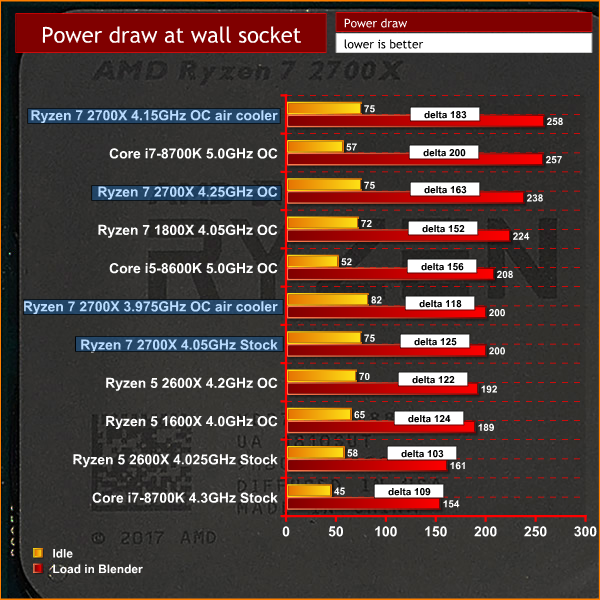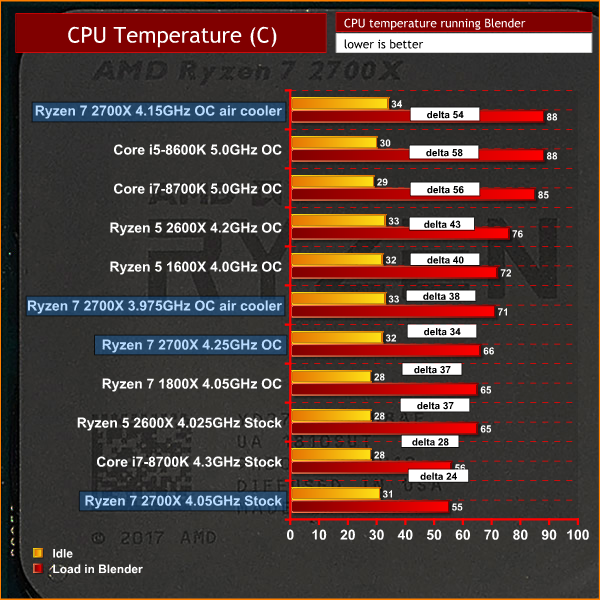Overclocking Overview
As you will have seen in our video we overclocked in the BIOS, rather than using AMD’s Ryzen Master v1.3 software. This involved setting the Vcore at 1.35V, Load Line Calibration on Turbo and multiplier at 42x. The CPU would boost briefly to the 4.3GHz mark and then settle to 4.20GHz.
The benefits of overclocking were appreciable, though we are not sure they are worthwhile unless you consistently demand maximum CPU performance. We feel that raising Cinebench performance from 1,800 marks to 1,900 marks is a handy bonus, but do not much like the extra 10 degrees in CPU operating temperature. If you are looking for CPU performance you get far more gain merely from having eight cores compared to six than you do from the extra clock speed. This is one of those situations where you need to proceed with caution.
Power and Heat


Power and Heat Overview
We were surprised to find that Ryzen 7 2700X draws more power than Ryzen 7 1800X and also runs hotter, when you would expect the opposite from a new fabrication process. In fairness to AMD the increased 105W TDP of Ryzen 7 2700X compared to 95W for the Ryzen 7 1800X should have given us some warning. The explanation is that Precision Boost 2 uses the available headroom to ramp up clock speeds whenever possible so it always heads towards that impossible target of 4.3GHz.
It is also notable that AMD has a higher idle power draw than Intel, however we need to consider there are more hardware cores under the hood and take that into consideration. Nonetheless we have to think that AMD could make improvements in this area by reducing idle power consumption in the future.
 KitGuru KitGuru.net – Tech News | Hardware News | Hardware Reviews | IOS | Mobile | Gaming | Graphics Cards
KitGuru KitGuru.net – Tech News | Hardware News | Hardware Reviews | IOS | Mobile | Gaming | Graphics Cards


